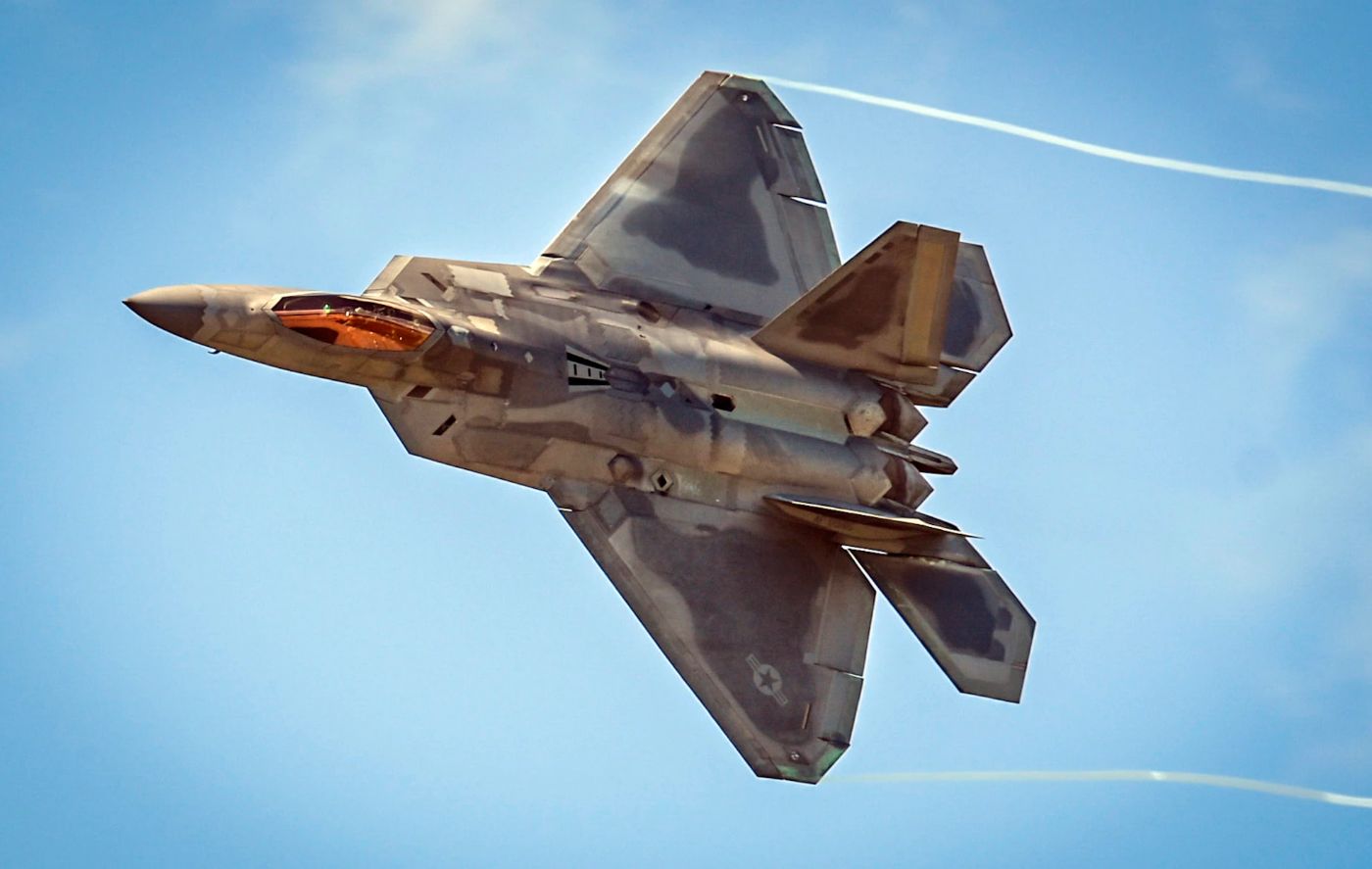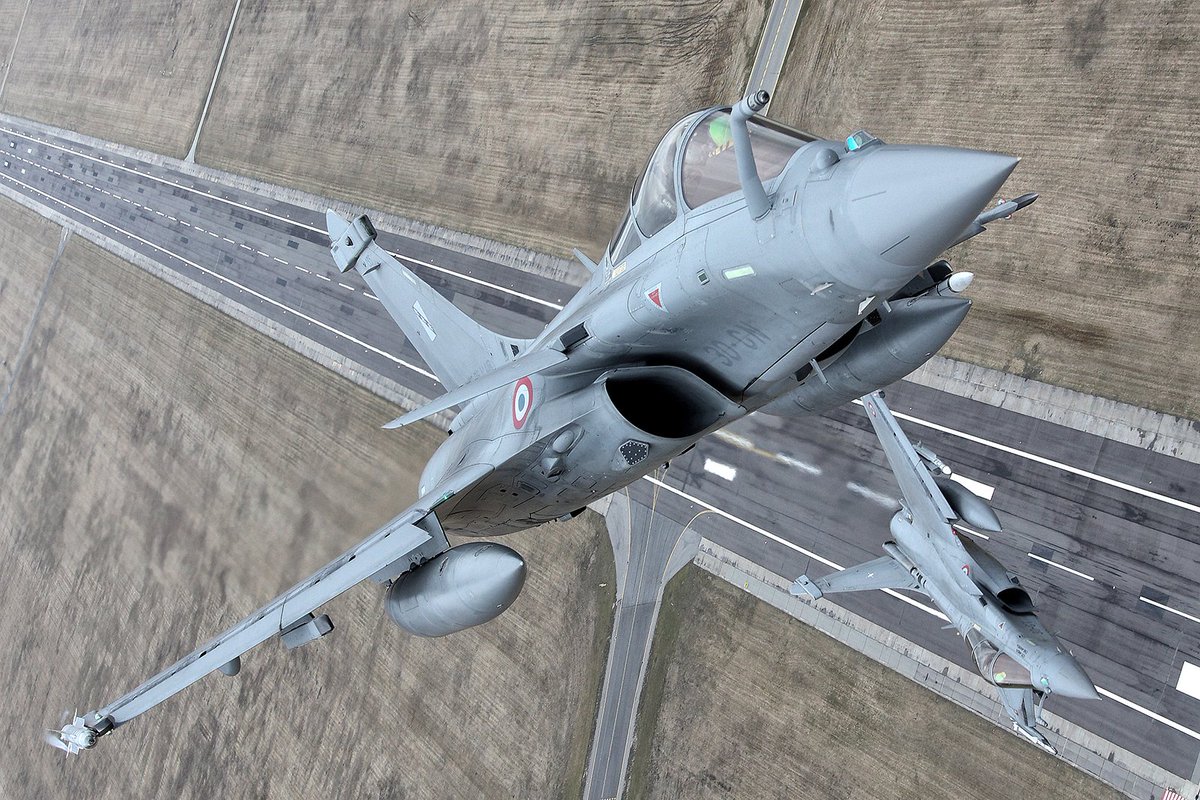The United States Air Force recently deployed its F-22 Raptors, frequently hailed as the world’s most advanced stealth fighter jets, to Japan’s Kadena Air Base. This strategic move highlights the US commitment to maintaining air superiority in the Pacific amidst increasing tensions with China.
Kadena Air Base, often called the Keystone of the Pacific, has hosted US fighter aircraft since the end of World War II. In 1979, the base received F-15 fighter jets, which have been a continuous presence ever since.
However, in 2023, the Air Force began phasing out the two squadrons of F-15C/D Eagles, replacing them with a rotational mix of F-16s, F-35s, and F-22s. The phase-out of the F-15C/D Eagles marks a transition towards utilizing more advanced fighter jets to reinforce America’s aerial dominance in this region.
Furthermore, this deployment gains additional importance given China’s rapid deployment of its J-20 stealth fighters. Wuyishan Air Base in China’s Fujian province, located just 600 miles from Kadena, has recently seen a significant upgrade.
Formerly home to nearly dozens of obsolete Shenyang J-6W fighters converted to armed drones and various older jets, the base recently received six Chengdu J-20 “Mighty Dragon” fighter jets, according to the Air Force’s China Aerospace Studies Institute.
The J-20, China’s fifth-generation fighter jet, symbolizes the country’s aggressive military buildup. The 41st Aviation Brigade at Wuyishan is reportedly transitioning from older jets to these advanced J-20s, which will significantly enhance China’s air capabilities.
Given the proximity of Wuyishan to Kadena and the increased deployment of advanced fighters on both sides, experts suggest that potential encounters between US F-22 Raptors and Chinese J-20s in international airspace are highly plausible.
US Patriot System Spotted in China? Netizens Debate If Russia Could Have Gifted The AD Launcher To Beijing
Therefore, this deployment of Raptors to Kadena is likely a strategic response to the growing presence of J-20s, ensuring that the US maintains a technological and tactical edge in the region.
Rare Dogfight Between F-22 & F-35
Following their recent deployment to Japan, four F-22 Raptors were quickly deployed to South Korea’s Kunsan K-8 Air Base, marking a significant step in joint training efforts between the United States and South Korea.
According to the USAF, the deployment of these advanced fighter jets aims to enhance dissimilar training and test agile combat employment (ACE) capabilities within the Indo-Pacific region.
ACE, which involves force packaging aircraft and personnel to rapidly and successfully conduct operations in various strategic locations, remains a top training priority for both US and South Korean forces.
The service added that deploying F-22 Raptors to Kunsan AB provides an opportunity to practice and refine these critical skills, crucial for meeting theater requirements. In a statement released on May 15, the US Air Force highlighted that the arrival of the F-22s validates the Wolf Pack’s ability to “Accept Follow-on Forces.”
Over the next week, Kunsan AB will support maintenance operations and facilitate the projection of these fifth-generation aircraft into the Republic of Korea airspace.
One notable aspect of this deployment is the participation of two US Air Force F-22 Raptors in a rare dogfighting exercise alongside South Korean F-35As over the Korean Peninsula. This exercise, the first of its kind between these advanced fighter jets, focused on close-quarter air combat and aimed to test and enhance the skills of both air forces.
During the simulated battles, all four stealth fighters alternated between offensive and defensive roles, providing valuable experience in diverse combat scenarios.
The Republic of Korea Air Force (ROKAF) stated that these exercises helped pilots learn the latest tactics and improve their skills in close-range combat.
Additionally, such exercises offer a chance to push the boundaries of F-35 capabilities, considering that the F-22’s radar cross-section is smaller than its successor’s, making it exceedingly challenging for enemy aircraft to detect the platform.
Turkey’s ‘F-35 Alternative’ Set For 2028 Induction; KAI Official Says Fifth-Gen ‘KAAN’ Better Than Lightning II
Despite the significance of this joint training, the exercise’s outcome has not been publicly disclosed. As noted by the EurAsian Times, the South Korean Air Force maintains professional discretion regarding such matters, typically discussing results privately during post-sortie debriefings.
Both the F-22 Raptor and F-35A Lightning II are fifth-generation fighter jets lauded for their advanced capabilities, crucial in deterring and countering threats posed by rivals such as China and Russia.
In fact, Chinese military researchers have openly acknowledged the threat posed by these stealth jets in potential conflicts, particularly in scenarios involving Taiwan.

Is F-22 Truly Unbeatable?
The F-22 Raptor, often hailed as the pinnacle of air superiority, has faced its share of challenges. Simulated dogfights against ‘non-stealthy’ platforms have somehow dented its invincible image. Among these encounters, notable losses to German Eurofighter Typhoons and Rafale fighters about a decade ago have been widely discussed.
In 2012, during the US Air Force’s Red Flag air combat exercises over Alaska, German Eurofighter Typhoons from the Luftwaffe’s 74th Tactical Air Force Wing engaged in close-range Basic Fighter Maneuver (BFM) drills with F-22 Raptors.
While these dogfights were simulated, the German pilots took them seriously, scoring notional kills against their F-22 opponents.
‘Raptor Salad’ For Lunch! US F-22 Raptor Outgunned, Outmaneuvered By German Eurofighter Typhoon?
In the aftermath of these drills, German pilots boasted about their victories against the F-22s, leading to widespread coverage by global media. One German Pilot said they had “a Raptor salad for lunch.”
Reports surfaced suggesting that in within visual range (WVR) combat scenarios, the Eurofighter Typhoon demonstrated superiority over the F-22, particularly when flown without external fuel tanks.
One issue highlighted was the F-22’s tendency to lose energy when using thrust vectoring (TV), affecting its maneuverability in close-quarters combat. Despite the F-22’s “very high mission success rate” throughout approximately 80 missions, it appeared to struggle in one-on-one engagements.
German air officer Marc Grune noted that the Eurofighter Typhoon surprised the F-22 pilots with its aggressive maneuverability, indicating an unexpected level of parity between the two aircraft in close combat situations.
However, the F-22’s strengths lie in modern, long-range combat, where its stealth capabilities allow it to engage multiple enemies beyond the pilot’s natural field of vision.
The United States Air Force explained that while one-on-one combat is one aspect of evaluating an aircraft’s capabilities, the F-22 is designed and employed as part of an integrated force for offensive operations.
Ukraine Adopts Vietnam War Tactics To Hunt Russian AD Missiles; Know About US Air Force’s ‘Wild Weasel’
At the time, one USAF officer reiterated that the F-22’s true value lies in its ability to operate in tandem with other fighters, mitigating the likelihood of close engagements while retaining the capability to excel when necessary.
Furthermore, the USAF Raptors faced a disadvantage in the aerial clash with the German Eurofighter Typhoon since these engagements occurred within visual range (WVR), nullifying the F-22’s usual strengths in stealth and sensor integration.
Typically, F-22 pilots would detect the Typhoon long before the latter became aware of their presence, enabling the Raptor to engage from beyond visual range (BVR) or gain a favorable position.
Moreover, the F-22 was burdened with external fuel tanks, impeding its maneuverability and stealth capabilities. It is improbable for a pilot to engage in a life-threatening dogfight with external fuel tanks attached and would likely jettison them upon encountering a hostile aircraft or even beforehand.
On the other hand, the German Eurofighters flew without fuel tanks or external munitions, granting them superior maneuverability. As a result, the dogfight favored the German Eurofighters from the start.
Another aircraft that gained attention for outperforming the F-22 was the French Rafale aircraft. In 2009, in a training exercise held in the United Arab Emirates (UAE), a squadron of F-22 Raptors from the US Air Force’s 1st Fighter Wing participated alongside French Rafale fighters, UAE Mirages, and British Typhoon jets.

During the collaborative drills, fighters from each nation engaged in various training evolutions, including dogfighting scenarios.
Following the conclusion of the exercise, the French Ministry of Defense released footage showing a Raptor in a disadvantaged position against a Rafale, captured by the Rafale’s forward-facing camera.
While the US denied that one of its planes had been defeated by a Rafale, it disclosed that a single F-22 was taken out by a UAE Mirage during the exercises.
However, experts who analyzed the footage noted the French pilot’s impressive maneuverability. The pilot pushed the Rafale to its limits, reaching up to 9Gs during the dogfighting exchange.
The video depicts the Rafale’s victory over the F-22, underscoring the crucial role of pilot skill in aerial combat. Despite the F-22’s technological superiority, the pilot’s prowess and tactical acumen are equally significant factors.
The success of Typhoons and Rafales over the F-22 is not the only incident. Several years before the Rafale incident, an F-16 Fighting Falcon reportedly managed to outperform a Raptor during a military exercise.
Furthermore, during a separate air drill in early 2009, a Navy Growler jet achieved a similar result, once again showcasing instances where aircraft perceived as less advanced were able to best their technologically superior counterparts.
- Contact the author at ashishmichel(at)gmail.com
- Follow EurAsian Times on Google News




